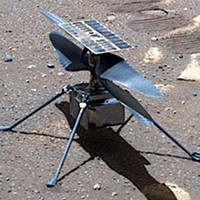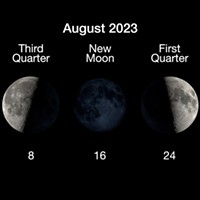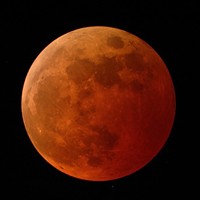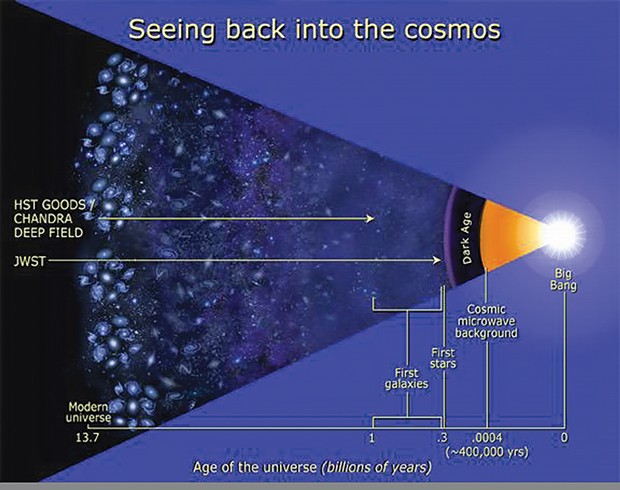[
{
"name": "Top Stories Video Pair",
"insertPoint": "7",
"component": "17087298",
"parentWrapperClass": "fdn-ads-inline-content-block",
"requiredCountToDisplay": "1"
}
]
This is a continuation from last week, looking at arguably the most complex instrument ever created by humans: the James Webb Space Telescope. It's scheduled for launch on Dec. 22, before being positioned in its operational orbit (L2) a million miles from Earth. During its month-long voyage to L2, it will unfold, origami-style, into its working configuration.
What's special about the infrared wavelengths that Webb is optimized to observe?
While the telescope will be able to see orange and red, it's in infrared wavelengths that Webb will really perform. Infrared is important for at least two reasons: "Near" (i.e. in the Milky Way), cold, objects, such as planets, emit light most strongly in the infrared; and light from the most distant — that is, oldest — objects in the cosmos is shifted far into the infrared. Infrared wavelengths are mostly invisible to us at present, since our atmosphere absorbs them before they can reach ground-based telescopes. They're also largely invisible to Hubble, whose mirrors are maintained at about 59 F, meaning the telescope itself is radiating "noise" in the very spectrum in which astronomers are interested.
So Webb will be observing planets beyond our solar system?
Very much so. Ironically, the many delays in Webb's launch date (originally 2007) have turned out to be a boon because the idea of investigating exoplanets wasn't included in the original 1996 proposal, as the very first detection of one was only made a year earlier. Since then, astronomers have discovered about 5,000 exoplanets in our galaxy and we now know that most stars have planets, averaging perhaps 10 per star. Some of these are in the theoretically habitable "Goldilocks zone" around their stars, where it's neither too hot nor too cold for water to exist in a liquid state. Most scientists in the field believe liquid water is essential for life.
How will Webb probe exoplanets for life?
Webb's infrared detection ability, at least a thousand times better than our best instruments to date, will investigate atmospheres of the most promising exoplanets. The technique usually employed, transmission photometry, uses spectroscopy to analyze the chemistry of an exoplanet's atmosphere as it transits its star. Certain "unnatural" chemistries would signify the presence of life.
For instance, imagine putative ETs checking Earth from far away with a telescope like Webb. They'd be able to detect both oxygen and methane in our atmosphere, two gases which naturally react to form carbon dioxide and water, so they shouldn't exist as separate molecules unless something is constantly producing them. That something is, of course, life.
How far back will Webb see?
To better than 200,000 years after the Big Bang, when the first stars and/or galaxies were coming into existence. To date we have only a very rough idea how the early cosmos spawned clumps of matter in such a way that it resulted, nearly 14 billion years later, in today's universe (complete with us). Cosmologists would love to know more about this early phase. Which came first, stars, galaxies, or black holes? What were the first stars like? How did huge black holes form so quickly? Because light from ancient objects is redshifted due to cosmological expansion (the farther we look, the faster objects are moving away from us), Webb's awesome infrared ability should help answer these questions. Also, with its longer wavelength, infrared light penetrates obscuring dust and gas better than visible light.
What's Webb's timeframe?
Six months after being placed in orbit, the telescope should start sending scientific data back to Earth. It has nominal mission duration of five years, with an upper limit of about 10, the main limitation being the amount of fuel needed to keep it in position. Beyond the two areas mentioned above and based on experience with previous space telescopes, it's Webb's unexpected discoveries that will no doubt keep us curious Earthlings intrigued for a very long time.
Barry Evans (he/him, [email protected]) shudders when contemplating everything that can go wrong as the Webb unfurls itself
Speaking of NASA, James Webb Space Telescope
-

The Little Drone that Could
Mar 14, 2024 -

Super Blue Moon Set to Rise
Aug 23, 2023 -

'Blood Moon' Lunar Eclipse Starts Just After Midnight
Nov 7, 2022 - More »
Comments
Showing 1-1 of 1
more from the author
-
A Brief History of Dildos
- Apr 11, 2024
-
Eclipse!
- Mar 28, 2024
-
The Little Drone that Could
- Mar 14, 2024
- More »
Latest in Field Notes
Readers also liked…
-
Trouble on the Line: The Reality Part 2
- Nov 3, 2022

































